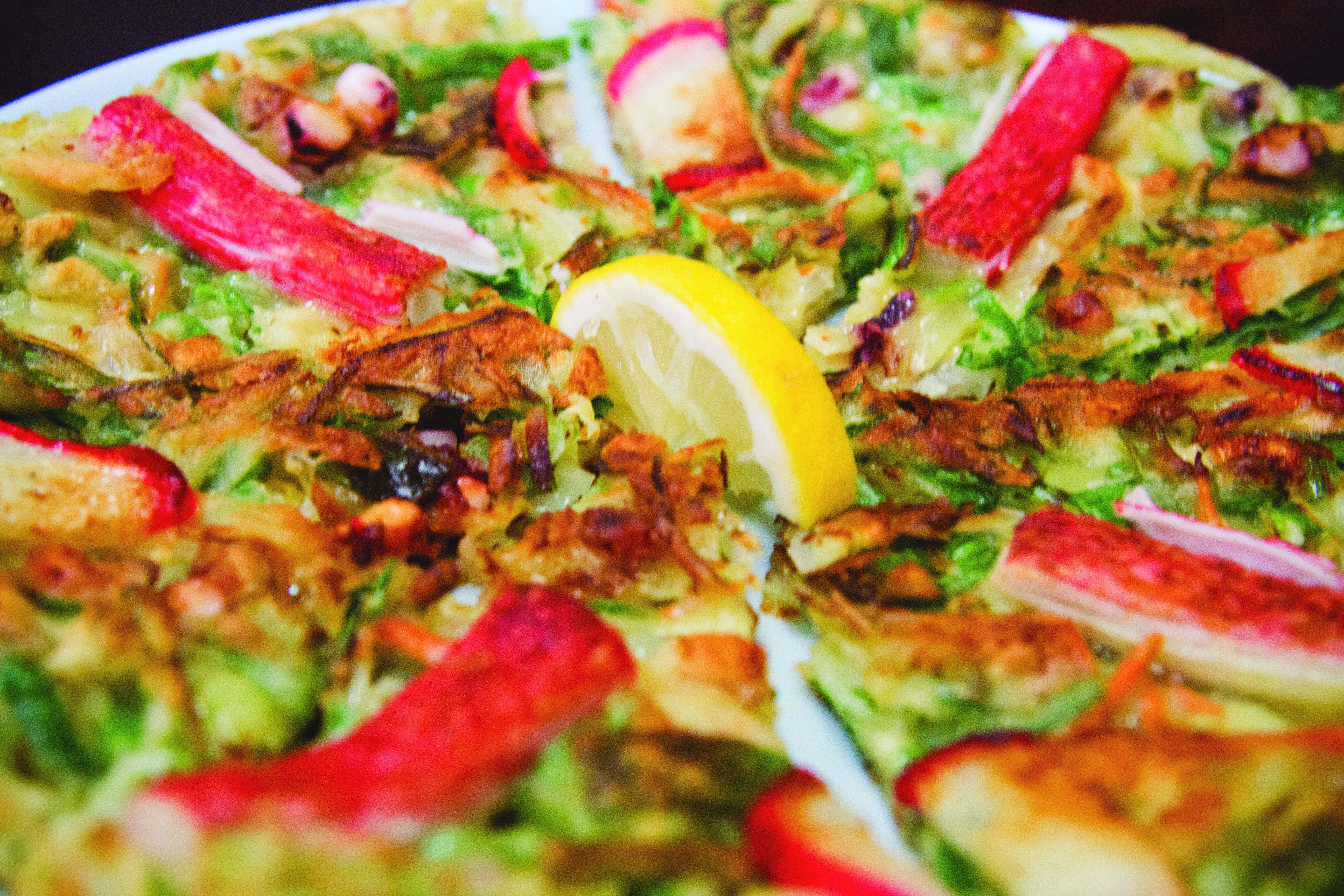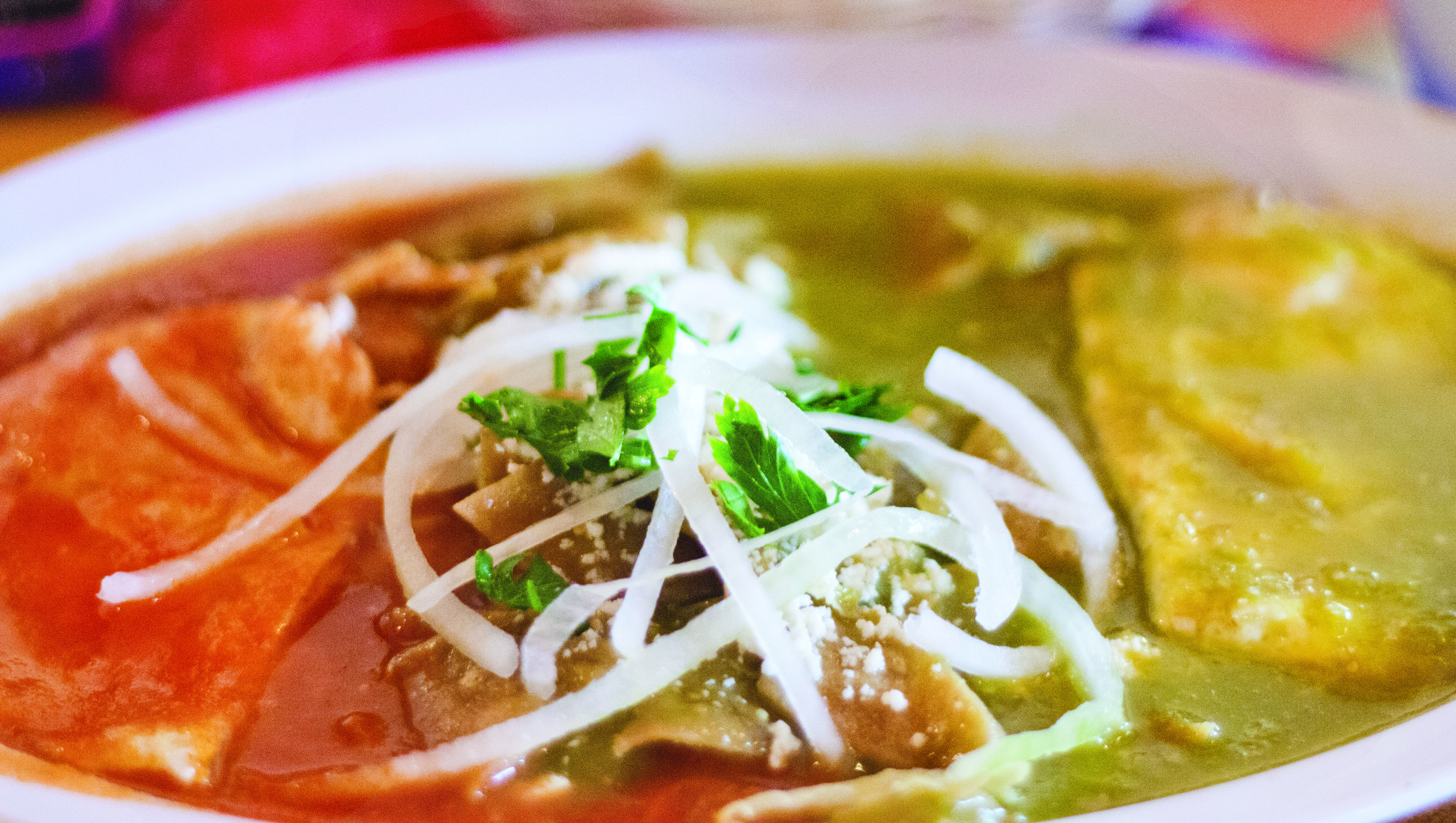
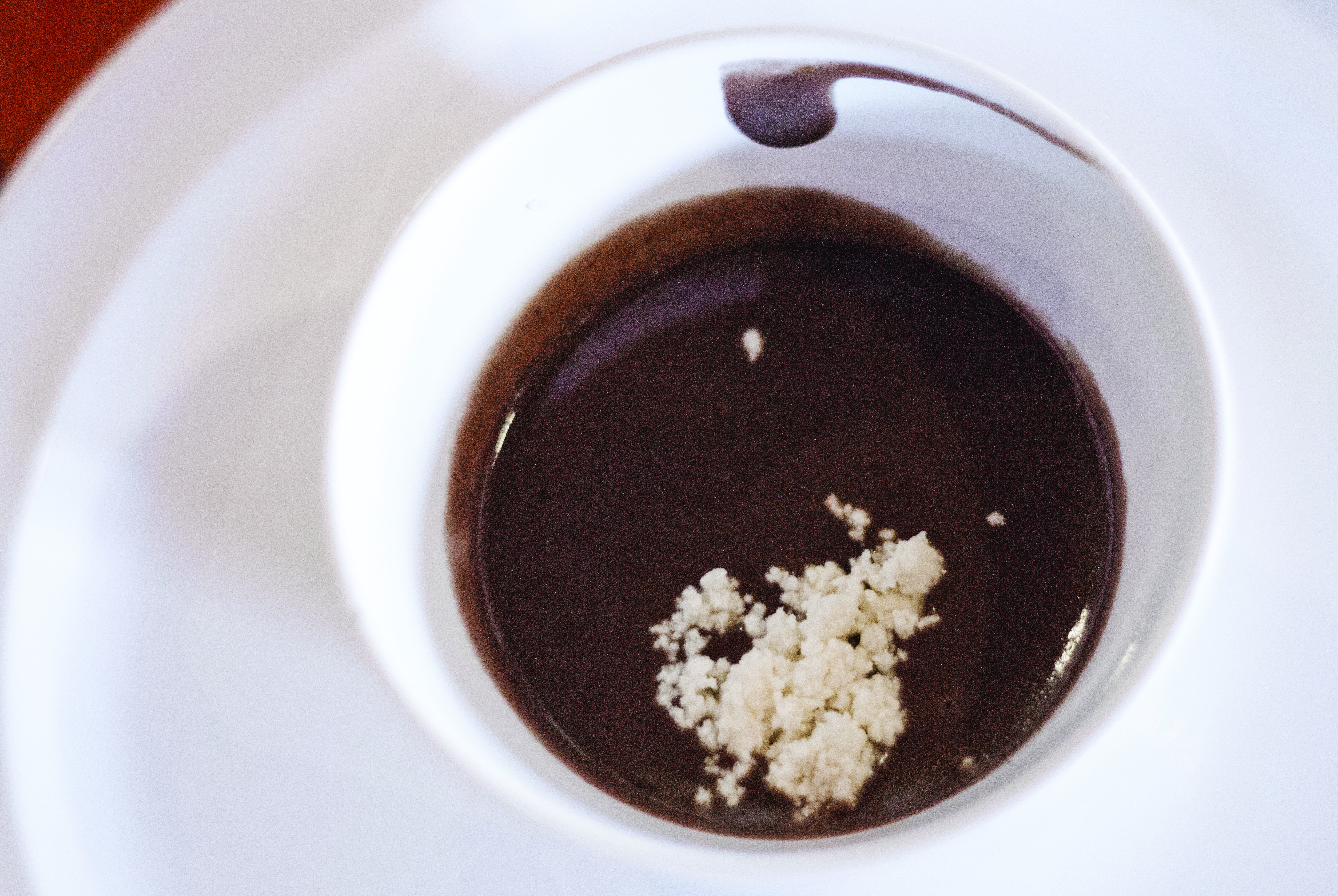
Guelaguetza: Chocolate de leche is a traditional Oaxacan drink.
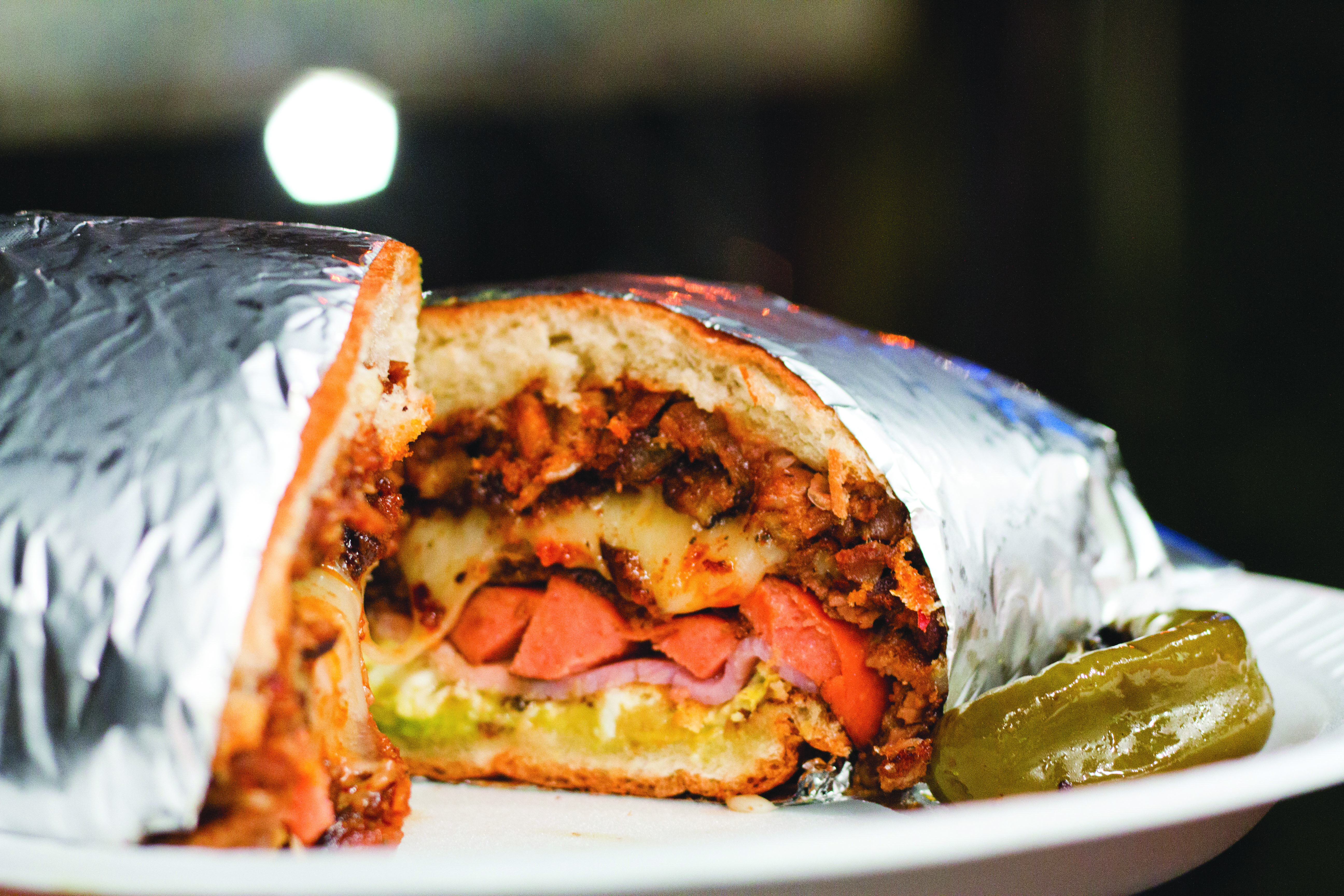
The Torta Cubano is El Flamin’ Taco’s specialty.
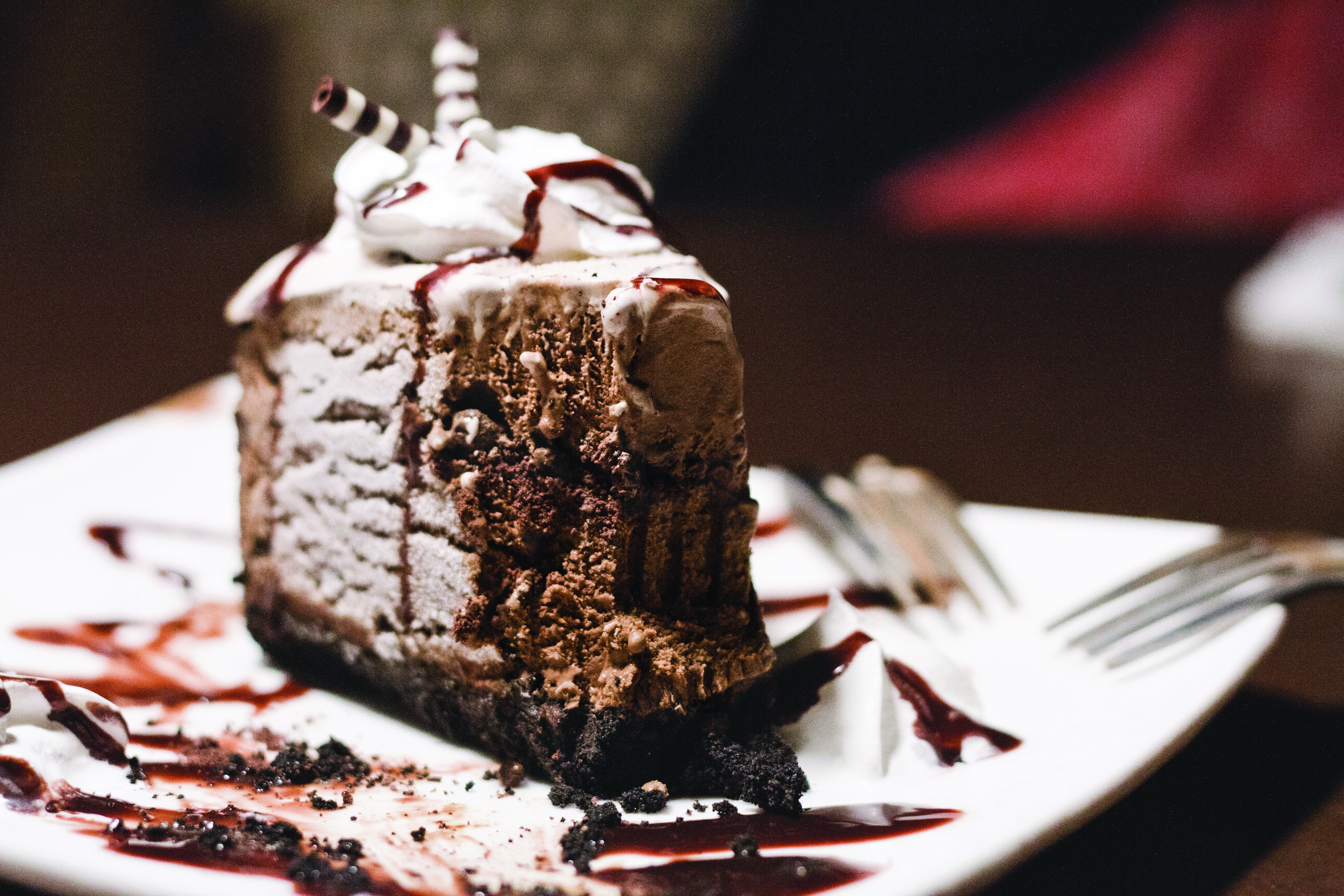
Yellow House Cafe: The decadent mocha ice cream cake offers bold flavor.
Students are willing to battle the traffic to Koreatown in order to get their Korean barbecue fix, but the area has more to offer than all-you-can-eat meat. While searching for places that didn’t require cooking our own meat, we found a few Korean and Mexican spots that make the 10-mile trip east of UCLA worth it.
Western Doma Noodle
429 North Western Ave. Suite 10
Los Angeles, CA 90004
It’s easy to pass by Western Doma Noodle without ever noticing it. The small restaurant is crammed between identical storefronts in one of Koreatown’s bustling shopping centers. However, after walking through its doors and catching a whiff of its grilled meat, you’ll be happy you found it.
“Doma means cutting board,” owner Mi Ok Baik said, as she pretended her hand was a knife making cutting motions on an imaginary board.
The cutting board is an important tool for preparing the restaurant’s specialty hand-cut noodles. In the dumpling noodle soup, these long, thick noodles create a bed for delicate dumplings filled with a green onion mixture. Sliced zucchini and beef strips make the soup seem hearty, yet healthy, and cubes of boiled potato add to the soup’s creamy-white color.
Another one of the restaurant’s specialties is the seafood pancake, which is equally light and filling. Disregard all images of heavy, carb-loaded bread that the word “pancake” conjures. This pancake is just the opposite ““ made of a light batter that binds together a rainbow of seafood from octopus and shrimp to fish cake and imitation crabmeat, as well as carrots and green and white onions. The thin, golden brown pancake is about a foot in diameter and is served with a salty, wasabi-based sauce.
Western Doma Noodle can get very busy and Baik almost single-handedly keeps the entire operation running smoothly. Originally from Seoul, South Korea, Baik moved to Los Angeles 32 years ago and has worked in the restaurant business ever since. Now in its 12th year, Western Doma Noodle is a culmination of the experiences and recipes Baik has acquired over the years.
El Flamin’ Taco
505 South Vermont Ave.
Los Angeles, CA 90020
Just about every street in Koreatown has a taco truck (or two). But unlike the other trucks, El Flamin’ Taco takes over an entire car wash parking lot and includes separate stands for both a tacos al pastor spit and a contraption for deep-frying quesadillas. The addition of collapsible tables and chairs creates a makeshift outdoor restaurant that opens for dinner and churns out street tacos, burritos and tortas until 4 a.m.
At El Flamin’ Taco, tacos al pastor require special attention ““ it’s one cook’s sole responsibility to craft these tacos. The cooking method is similar to that of Middle Eastern shawarma, where a slowly spinning vertical spit cooks a mound of meat, dripping with its own juices. This lightly charred and tender meat is then combined with a juicy chunk of pineapple for a mouth-watering taco ““ that’s a steal at only $1.35.
The truck also specializes in tortas. Slap a fried egg on just about any dish and that meal instantly becomes 10 times more delicious. Add guacamole, carne asada, ham, a slice of breaded beef called milanesa, hot dog and cheese, sandwich that between two buns, and you have what El Flamin’ Taco calls the Torta Cubano.
Overindulgent in the best way possible, the sandwich reminded me of Fat Sal’s method of cramming together a ton of greasy ingredients, all of which could star in sandwiches of their own.
Guelaguetza
3014 West Olympic Blvd.
Los Angeles, CA 90006
Wanting an authentic Oaxacan meal, I asked the waiter at Guelaguetza for some help. His answer: grasshoppers.
Or, as they’re written on the menu, Plato de Chapulines. The grasshoppers are prepared with lemon, garlic and salt. They were crunchy with a strong cayenne pepper taste and what seemed like an (understandably) obscene amount of lemon. The taste was interesting enough to have two grasshoppers, but the sample stopped there.
Guelaguetza serves authentic dishes and drinks from the Mexican state, Oaxaca. Those unfamiliar with Oaxacan food might still recognize popular Mexican dishes like tamales, enchiladas, and moles. Less recognizable items like “tlayuda,” a Mexican-style “pizza” made with a tortilla instead of dough, or “ensalada de nopalitos,” a cactus salad, were also on the menu.
A steaming cup of “chocolate de leche,” a drink made of Oaxacan chocolate cooked with milk, washed the grasshoppers down perfectly. The chocolate de leche was served with “pan de muerto,” or “bread of the dead,” a large pastry adorned with what appeared to be an edible face.
“It’s a traditional bread we make only around Halloween,” said Martha Martinez, a hostess at Guelaguetza. “The sugar face is placed on the top in remembrance of people who have passed away.”
The Huevos Divorciados, another of the waiter’s recommendations, went down much easier than the grasshoppers. Translated to “divorced eggs,” this main dish is a plate of two fried eggs, separated on either side of the plate, one covered in green salsa, the other in red. A serving of chilaquiles, fried tortilla chips drenched in mole and queso fresco, kept the two parties separated. Combined with the wet chilaquiles, the dish quickly turned into a drippy, yet tasty, mess.
Yellow House Cafe
234 South Oxford Ave.
Los Angeles, CA 90024
Among Koreatown’s densely packed skyscrapers and glowing neon lights sits a restaurant disguised as a yellow cottage. In what would be the backyard, vines and Christmas lights cling to the walls and banisters, creating a peaceful ambiance in the midst of the congested neighborhood.
It’s this serene atmosphere that makes the Yellow House Cafe a good place for both romantic dinners and late-night study sessions. Although the cafe serves food, it is known for its long list of specialty coffees and teas, as well as desserts.
The blooming flower tea matched perfectly with the restaurant’s garden setting. The smell of fresh-cut flowers filled my nose as I drank the tea. The drink was very pleasant and was enough for two people, but hardly seemed worth the nearly $8 price tag.
The red bean frappe was creamy, thick and full of tiny pieces of red bean, a sweet and especially starchy ingredient found in many Asian desserts. But if you’re looking for red bean flavor, the frappe disappoints. It tasted more like plain vanilla soft-serve than anything else. At $7, a McFlurry from McDonalds would be a better option.
It was ultimately the mocha ice cream cake that helped make up for the overpriced drinks. The ice cream layer had a pleasantly intense coffee flavor and velvety texture that contrasted well with the crisp cookie crust.
